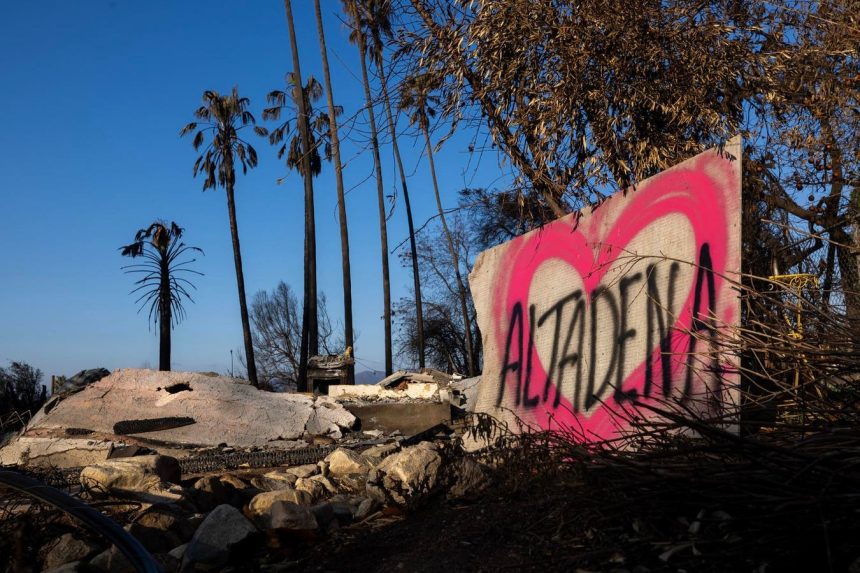The devastating wildfires that ravaged Los Angeles County in January 2024, primarily the Palisades and Eaton Fires, left an indelible mark on the region, resulting in significant loss of life, widespread property destruction, and immense economic damage. The fires, fueled by a confluence of extreme weather conditions including powerful Santa Ana winds, prolonged drought, and low humidity, rapidly spread across thousands of acres, consuming homes, businesses, and critical infrastructure in their path. The ferocity and scale of the blazes forced mass evacuations, displacing over 130,000 residents and creating a sense of urgency and fear among affected communities. The fires ultimately claimed the lives of 27 individuals, a grim toll that underscores the devastating power of these natural disasters.
The Palisades Fire, originating in the affluent coastal neighborhood of the same name, became the largest of the blazes, scorching nearly 24,000 acres. The Eaton Fire, which ignited near the San Gabriel Mountains, also expanded rapidly, covering over 14,000 acres and prompting mandatory evacuations in Altadena, Pasadena, and Sierra Madre. The combined impact of these two fires, along with several smaller blazes like the Hughes, Hurst, and Sunset fires, stretched firefighting resources to their limits and created a complex emergency situation that demanded a coordinated response from local, state, and federal agencies. The fires brought to the forefront the challenges of managing large-scale evacuations, coordinating firefighting efforts in extreme weather conditions, and providing essential resources to displaced residents.
The economic fallout from the fires was substantial, with preliminary estimates projecting damages in the tens of billions of dollars, potentially reaching as high as $50 billion. Insured losses alone were predicted to reach $20 billion, making these fires among the costliest in U.S. history. The destruction of thousands of homes and businesses, coupled with the disruption to daily life and the long-term recovery process, posed a significant economic challenge for the region. Major insurance firms braced for substantial payouts, and businesses faced significant disruptions as operations were halted and infrastructure damaged. The fires also underscored the vulnerability of high-value properties in fire-prone areas and the importance of adequate insurance coverage in mitigating financial losses from such disasters.
The fires also sparked political debate and controversy, with criticism directed towards both local and state government officials. Former President Trump and prominent figures like Elon Musk questioned the effectiveness of the government’s response, specifically citing water management practices and regulations they believed exacerbated the fire risk. The debate highlighted longstanding tensions over land management, environmental regulations, and the role of government in disaster preparedness and response. It also underscored the complex interplay between human activities, environmental factors, and the increasing frequency and intensity of wildfires in the region.
The response to the fires involved a massive mobilization of resources, with thousands of firefighters battling the blazes on the ground and in the air. The California National Guard was deployed to assist with firefighting efforts and to prevent looting in evacuated areas. FEMA provided substantial financial assistance, covering the full cost of debris removal and other disaster relief expenses. The disaster declaration unlocked federal funds for individual assistance, offering much-needed support to those affected by the fires. Numerous private organizations and individuals also stepped up to provide relief and assistance, donating money, supplies, and other resources to help those in need.
The aftermath of the fires brought a long and arduous recovery process. Displaced residents faced the daunting task of rebuilding their homes and lives, navigating insurance claims and accessing essential services. The widespread destruction of infrastructure necessitated significant repairs and rebuilding efforts, further impacting the region’s economic recovery. The fires also left a lasting impact on the environment, damaging ecosystems and contributing to air pollution. The long-term effects on air and water quality remained a concern, with health officials issuing warnings about potential health risks associated with fire debris and runoff. The fires served as a stark reminder of the vulnerability of communities to natural disasters and the importance of proactive measures to mitigate future risks.



